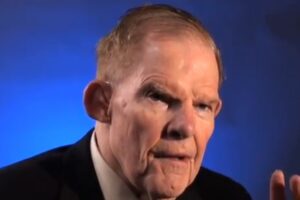Putting A Great Sermon Together
Putting A Great Sermon Together
In the last few posts we’ve looked at the impact that sermons can have. Now we’re going to turn to the challenge of putting a great sermon together for your preaching event.
I love this quote by Haddon Robinson, prolific author and teacher on preaching:

Haddon Robinson
There are three types of preachers: those to whom you cannot listen; those to whom you can listen; and those to whom you must listen. During the introduction the congregation usually decides the kind of speaker addressing them that morning. (Biblical Preaching: The Development and Delivery of Expository Messages (Grand Rapids: Baker, 2001), p. 175)
When you are thinking about putting a great sermon together for the coming Sunday, you should spend time planning an effective introduction. I’ve written extensively about introductions in previous posts. Here’s a link to the beginning of a series of posts on specific ways to create an introduction. Here, however, I want to concentrate on some generalities about introductions to great sermons.
The Introduction to a Great Sermon
Fiction authors know that a great story has three parts: a beginning, a middle, and an ending. This is a simple structure that help you in putting a great sermon together for your congregation. This is the way Brandon Hilgemann puts it in a book that I’ve referred to often in the past, Preach and Deliver.
The beginning needs to grab your attention. The middle needs to hold your interest. The end needs to resolve the story or the message) in a memorable way…Too many sermons have dragging introductions, rambling middles, and lazy conclusions. (p. 79)
What are the keys to making an introduction? Here are some suggestions.
Don’t make the introduction too long
I listened to a sermon this past Sunday where the preacher summarized the series that he was in, quoted several passages of Scripture from both the Old and New Testaments, gave several illustrations of why the world in Isaiah’s Day was much like ours, and then several illustrations of why our world is in a mess. All of that was in the introduction. Then, after several minutes, he called our attention to the passage that the message focused on. The introduction was so long that I was wondering several times, “Where is this going?” It wasn’t clear. Most preaching experts agree that the introduction should be short, no more than 2 or 3 minutes out of a 25 to 30 minute sermon. Here’s how H.B. Charles Jr. says it in his book, On Preaching:

H. B. Charles, Jr
You want your introduction to be clean and tight and strong. Don’t undermine it by stuffing it with too much material. The body of the message should be filled with good meat. The introduction should be fat free. So make sure everything in the introduction has a real purpose for being there. Know why every sentence is there, and ruthlessly edit out whatever does not fit. (On Preaching: Personal and Pastoral Insights for the Preparation and Practice of Preaching (Moody, 2014), location 926 Kindle edition).
Again, Brandon Hilgemann summarizes well the questions we should be asking as we formulate the introduction:
What are you talking about? Why should I care? How does this impact me? These are the questions people in the audience want to know. (Preach and Deliver, p. 81)
Some preaching experts suggest that people decide in the first 30 seconds whether they are interested in what you are going to say. Make sure that you use those seconds well.
Great Sermon Introductions Create a Tension

Tension
The second guideline for an introduction would be to use it to create a tension in your hearers. Good authors know that a mystery keeps people interested. I tell stories to my grandchildren as I take them to school. Each week, as we near the school, one of them will ask, “What’s going to be the cliffhanger today?”
Good preachers know that at the end of the introduction, there should be a mystery, something that is going to be revealed in the body of the message. Andy Stanley, another expert preacher said,
Your introduction should raise the question you are going to answer, create the tension you are going to resolve, or point to the mystery that you are going to solve. (Communicating for a Change, Multnomah, 2006, p.154).
In the next post we’ll look at some examples of how this can in putting a great sermon together for your church. In the meantime, here is Lane Sebring of preachingdonkey.com giving instruction and free training material on creating impactful introductions.



